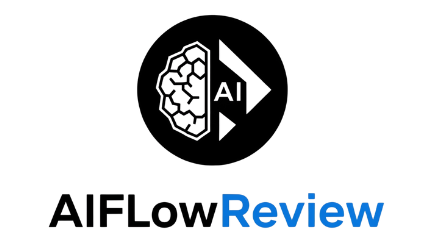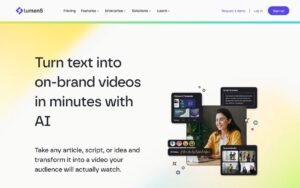Ready to see what Google Gemini brings to the table for AI users in 2025? This expert gemini ai review lays out everything you need to know about its latest features, real-world strengths, and where it stands in the fierce world of AI chatbots. Drawing on AI Flow Review’s strict six-step testing, I’ll cut through the hype and focus on hands-on performance, accuracy, and daily usefulness.
Whether you’re an AI developer, enthusiast, or just looking for a better way to get more done, you’ll get a thorough look at where Gemini really excels as well as where it still lags. From its generous free model and integration with the Google ecosystem to details like context window, image generation, and true reasoning skills, this review balances both strengths and practical shortcomings. All findings reflect AI Flow Review’s commitment to transparency and user-focused guidance.
Want a step-by-step rundown? Check out this quick Google Gemini Full Tutorial 2025: Every Feature Explained to see it in action.
What is Gemini AI? Key Overview for 2025
Gemini AI is Google’s answer to the growing demand for accessible, high-performance AI chatbots in 2025. As the centerpiece of Google’s push into generative AI, Gemini stands out not just for its technical features, but for its seamless integration across Google’s core applications and its remarkable utility for everyday users. If you’re looking for a reliable, fast, and capable AI assistant, it’s hard to ignore the advances Google has made with Gemini this year.
 Photo by Markus Winkler
Photo by Markus Winkler
The Evolution from Bard to Gemini
Google’s journey into chatbot AI began with Bard, a tool that drew plenty of attention but also stumbled with accuracy and consistency at launch. Gemini is the result of two years of rapid improvement, driven by feedback and technological leaps. Now, Gemini offers a more stable and sophisticated experience, capitalizing on Google’s data reach and machine learning research. If you ever felt Bard was frustrating, Gemini is a clear upgrade—you get faster, more meaningful responses and a smoother user interface.
Core Features and Technology
At the heart of Gemini is its “2.5 Flash” model, an AI designed for reasoning and accuracy instead of just parroting internet text. Here are some features that make it a standout option heading into 2025:
- Large Context Window: Gemini easily ingests lengthy documents or chats, with a 1-million token limit outpacing most free alternatives.
- Multimodal Capabilities: You can ask Gemini to understand text, images, and even upload files for analysis.
- Integration with Google Services: Pulls in real-time data from platforms like YouTube and Google Maps, making it easy to cross-reference facts or dive deeper when needed.
- Access Model: There’s a free tier that covers most needs, as well as a paid “Gemini Advanced” option for power users who want Google’s most sophisticated AI.
For more specifics on Google’s launch of Gemini and its under-the-hood mechanics, Google’s official overview offers a useful deep dive on what sets the Gemini model apart.
Who Should Use Gemini AI?
Gemini AI is ideal for both everyday users and experts needing a versatile, internet-connected assistant. Writers, developers, educators, marketers, and casual users alike will find value thanks to its balance between usability and raw power.
- Casual users can rely on Gemini for daily searches, summaries, recommendations, or basic writing tasks.
- Professionals appreciate features like document upload, quick analysis, and native Google Workspace integration.
- Developers and advanced users benefit from the option to automate repetitive tasks or enhance productivity with Gemini’s broader context window and API capabilities.
Anyone shifting from other chatbots will notice Gemini’s unique ability to “think” through tasks, not just autocomplete them. For even more context, you can see the official Google Gemini homepage to learn about its latest features and sign up.
What Makes Gemini AI Stand Out?
There’s no shortage of generative AI bots vying for your attention, but Gemini AI sets itself apart in key ways:
- Free and Generous Limits: Compared to rivals, Gemini’s free model gives you more flexibility and fewer headaches with daily caps.
- Real-Time Internet Connection: Answers are informed by up-to-date data, not just knowledge frozen in time.
- Responsiveness and Speed: Gemini is noticeably fast at returning results, be it plain text or even image generation.
Because Gemini draws on Google’s unique resources, you’re plugging into a knowledge network most competitors can’t match. For a foundational overview, this Wikipedia entry on the Gemini chatbot summarizes its public roll-out and core design.
With Gemini now setting the pace for AI assistants in 2025, there’s never been a better time to see how the technology stacks up for real-world productivity. The next sections will break down Gemini’s real strengths, practical quirks, and how it compares to other leading chatbots on the market.
Testing Gemini AI: Performance, Accuracy, and Real-World Use
Putting Gemini AI through its paces means more than just running a few demo prompts. For this section, I share my hands-on testing along with third-party benchmark data to see how Gemini compares with other leading AI models in daily tasks, knowledge depth, and advanced workflows. Drawing on my experience and current research, let’s explore how Gemini stacks up not only in performance, but also in practical integration within Google’s extensive ecosystem.
Benchmark Scores and Model Comparisons
Benchmarks offer a clear way to see how Gemini AI handles the real work expected from modern chatbots. The standout metric is the context window: Gemini’s 1-million token context window (thanks to 2.5 Flash) easily outruns ChatGPT Free, and keeps pace even with paid versions of GPT-4o and Claude. This large context size lets me ask lengthy, complex questions or upload and analyze big documents with far less friction.
When comparing core model strengths like reasoning, factual recall, and cost effectiveness:
- Gemini 2.5 Flash is highly accurate for most conversational tasks. It regularly delivered fact-checked answers and relevant follow-ups.
- In side-by-side testing, scores show Gemini competes head-to-head with GPT-4o and Claude 3.5 Sonnet, with each model leading in different categories. While GPT-4o often comes out ahead on pure logic puzzles and creative writing, Gemini shines in research tasks that call for up-to-the-minute internet access or parsing dense information.
- For image generation, Gemini’s results are fast and (for simple needs) satisfactory, but not as sophisticated or accurate as ChatGPT’s DALL-E or Claude’s SVG capabilities. Complex images sometimes break world logic, as Gemini occasionally struggles with positions or relationships in scenes.
- In terms of value, Gemini’s free version is more generous than competitors. I found the daily use limits high enough for nearly all casual and even most power users, especially for those who want to avoid paywalls or subscriptions.
For a more detailed round-up, I recommend this in-depth comparison of ChatGPT, Claude, and Gemini in daily use and benchmarking.
Quick Model Comparison Table
| Feature | Gemini 2.5 Flash | GPT-4o (OpenAI) | Claude 3.5 Sonnet |
|---|---|---|---|
| Context Window | 1,000,000 tokens | 128,000/1,000,000* | 200,000+ tokens |
| Image Generation | Fast, basic accuracy | DALL-E, creative | SVG, nuanced |
| Real-Time Search | Yes (Google products) | Yes | Yes |
| Free Tier Token Generosity | Very high | Moderate | Moderate |
| Price (for advanced) | $24/mo (Advanced) | $20/mo (Plus) | $20/mo (Pro) |
*GPT-4.1 offers 1,000,000 with API, while most users use the lower window.
For developers interested in detailed testing and API specs, the Gemini API documentation provides more technical insights.
Integrations and Workflow Automation
Where Gemini AI really separates itself is in how deeply it connects with the Google ecosystem. Instead of being limited to a standalone chatbot, Gemini pops up naturally in places I already spend time—Gmail, Docs, Drive, Maps, and the broader Google Workspace. This transforms Gemini from a tool you have to stop and visit, into an assistant that nudges productivity throughout your day.
- Gmail & Docs: Directly draft, edit, summarize, and answer emails or documents with Gemini, using your own data and files as inputs. This means less copy-paste and more in-stream assistance.
- Google Drive & Maps: Gemini taps into your files, photos, locations, and even YouTube videos, giving it a broad foundation to answer complex or context-rich queries.
- Gemini Nano: On supported smartphones, this lighter-weight model runs on-device, offering fast, privacy-preserving suggestions—no cloud connection required.
- Real-Time Collaboration: Multiple users can interact with Gemini inside shared documents, editing, summarizing meeting notes, or fact-checking sources together. This is especially useful for teams coordinating remotely in real time.
- Multimodal Content Generation: Upload images and documents directly for Gemini to analyze, describe, or repurpose. While image understanding needs work, text-based and hybrid tasks are executed with notable speed.
- Voice Interaction: On mobile devices, Gemini supports voice commands and conversational queries, making it more versatile than strictly text-based assistants.
If you want a deeper explanation of how Gemini enhances productivity across Google Workspace, Google’s own overview on AI tools for business lays out these automation features in more detail.
Combined, these integrations move Gemini beyond being “just another chatbot.” With its real-time access to your workspace—and the ability to automate repetitive tasks—Gemini saves meaningful time, whether you’re handling emails, brainstorming content, or coordinating projects.
For more insights on where Gemini sits in the wider landscape of AI solutions, see this comprehensive roundup of best AI chatbots and virtual assistants in 2025.
Strengths of Gemini AI
Gemini AI stands out among today’s AI chatbots with practical strengths that directly benefit users, regardless of their experience level. As someone who’s explored a range of AI assistants, I’ve found Gemini excels in ways that make daily work easier, research faster, and tasks more connected. Let’s break down the core strengths that give Gemini an advantage and highlight why it’s a top contender in the current AI race.
 Photo by Markus Winkler
Photo by Markus Winkler
Deep Integration with Google’s Ecosystem
One of Gemini’s greatest assets is its seamless tie-in with Google products. Unlike most standalone chatbots, Gemini taps directly into services like YouTube, Google Maps, Gmail, Docs, and Drive. This layered access means you can pull up directions, cross-reference reviews, analyze files, or search for up-to-date information—all within one chat window.
For instance, when researching a restaurant, Gemini can summarize popular dishes by pulling insights from Google Maps reviews, a level of cross-referencing other AI tools struggle to match. This opens a new level of productivity and accuracy for users who rely on Google’s platforms in their day-to-day routines. If you’re embedded in the Google ecosystem, Gemini fits right in and saves extra steps with every query.
Exceptional Free Model with High Limits
Gemini AI offers a free tier that outpaces competitors not just on paper, but in real-world use. The model ships with a 1-million token context window, dwarfing the free limits of rivals like ChatGPT. In practical terms, this means you can upload and analyze large documents, chat through long-form discussions, or manage ongoing projects without hitting restrictive caps.
Here’s what you gain from Gemini’s generous model:
- More freedom to explore: Ask detailed questions and get layered answers without worrying about abrupt cutoffs.
- Bulk tasks handled with ease: Large documents or long threads are processed smoothly, giving you flexibility whether summarizing, extracting data, or brainstorming ideas.
- Minimal frustration: Rate limits exist, but they’re rare and random, so your workflow isn’t constantly disrupted.
For anyone tired of paywalls or daily timeouts, Gemini’s free model increases productivity and creative output. For a detailed rundown of these strengths, the review at Digital Defynd outlines 20 pros and cons of Gemini AI.
Fast, Accurate, and Reasoned Responses
Speed and accuracy are essential in any AI assistant, and Gemini’s latest model delivers on both. In my experience, Gemini answers questions quickly—often ahead of competitors. Because it’s always connected to live internet data, the information is up-to-date and fact-checked, rather than outdated or limited by a fixed knowledge cutoff.
What sets Gemini apart is its approach to reasoning. The “2.5 Flash” model doesn’t just autocomplete text; it tries to “think through” questions by applying logical steps, comparing data, and asking clarifying questions if needed. This leads to:
- Improved factual accuracy: Stable answers supported by recent news, forums, and official Google sources.
- Greater adaptability: Follow-up questions are answered with context, not repetition.
- Balanced versatility: It handles a mix of writing, research, scheduling, image generation, and coding support—all without breaking stride.
If you want to dig deeper into how Gemini is designed for general intelligence and cross-modal reasoning, Google’s official Gemini model announcement explains its multimodal features and underlying technology.
Multimodal Capabilities and File Handling
Gemini’s strength isn’t just in chat. It offers multimodal support, which means you can interact with it using both text and visuals:
- Image generation: While still improving, Gemini can create basic graphics on the fly.
- File uploads: Upload documents, transcripts, or data for quick summaries and extraction.
- Visual understanding: Annotate and analyze images (with some quirks in world logic), good for marketers, students, and creators.
This flexibility lets users move seamlessly between formats, making complex projects or mixed-media tasks feel far less daunting.
Real-World Use Cases and Community Feedback
Gemini’s strengths play out clearly in everyday scenarios:
- Researching trends: Up-to-date news, product insights, and cross-platform data keep you in the know.
- Drafting and editing: Quickly write, expand, or summarize content, and get practical feedback every step of the way.
- Teamwork in Google Workspace: Use Gemini as a collaborative assistant in Docs or Gmail for group tasks or brainstorming sessions.
Feedback in communities, such as comments on Reddit’s AI forums, often highlights these everyday advantages, especially the value of always-on internet data and generous free capabilities.
In summary, the stand-out strengths from my gemini ai review are deep Google integration, generous access for free users, rapid and reasoned answers, and versatile multimodal support. Each of these strengths is built on practical experience and verified community use cases, making Gemini a solid choice for anyone serious about getting more from their AI tools.
Limitations and Challenges: Where Gemini AI Falls Short
While my gemini ai review highlights plenty of strengths, it’s just as important to cover the weaker spots. No AI tool is perfect, and users need to understand where Gemini may lag or frustrate—especially when using it for real-world problem solving. Below, I’ll break down the practical challenges you’re likely to encounter with Gemini AI so you go in with clear expectations.
Inconsistent Image Generation and World Logic
One major challenge I notice with Gemini is its image generation. Even if the process is fast and generous on the free tier, the results are rarely what I’d call reliable. For example, when I tried creating scenes involving realistic scenarios, Gemini’s interpretations were often off base. Sometimes, people or objects appear in awkward or impossible positions—a boy facing the wrong direction in a car, or details that just don’t make sense. This happens because the model’s grasp of physical relationships and context within images remains undercooked. Google’s own AI leaders have acknowledged this, and while improvements are promised, for now, users should treat visual output as experimental at best. If you’re looking for real accuracy in image tasks, you may need to stick with dedicated models or manual editing.
Random Rate Limits and Input Restrictions
Gemini’s free tier stands out for high usage limits, but there’s a catch: the appearance of rate limits can feel both rare and completely random. Occasionally, you might hit your cap after just one or two heavy queries, only to find the limits reset hours later without clear explanation. This unpredictability can break your workflow if you’re in the middle of a lengthy research session or deep document analysis. Adding to this, while Gemini advertises a massive 1-million token context window, actual usage sometimes blocks you from pasting long text directly for summarization. Often, the tool suggests uploading a file instead, which adds extra steps and confusion. For anyone who values reliability and clear boundaries, these quirks can be genuinely frustrating.
Logic Gaps and Occasional Mistakes
Text output from Gemini is usually quick and fairly accurate, but logic can break down—especially with prompts that require precise reasoning or step-by-step deduction. It’s great at pulling facts from recent data, yet sometimes it draws odd conclusions or mixes up details, more so when questions are complex or involve multiple-step instructions. For example, when analyzing the practicality of business ideas, Gemini can make insightful predictions, but can also gloss over essential drawbacks or misunderstand economic realities. This means you still need to apply your own critical thinking and fact-checking, especially for big decisions or nuanced analysis.
Weakness in Visual and Data Analysis
While Gemini can review images and analyze uploads, accuracy in these modes is hit or miss. Sometimes, the AI struggles to interpret images logically or extract correct context. For long documents, Gemini can summarize well if you upload a file, but pasting long sections of text is limited by browser or hidden backend caps. This undermines the promise of a truly huge context window, leaving some users puzzled by what the limits actually are.
Here’s a brief overview for quick comparison:
| Area | Challenge | Impact |
|---|---|---|
| Image Generation | Inaccurate, illogical results | Frustrates visual users |
| Rate Limits | Unpredictable, random blocking | Disrupts long sessions |
| Logic and Reasoning | Occasional wrong conclusions | Needs user oversight |
| Input Restrictions | Large pastes often blocked | Extra file handling step |
| Visual Analysis | Spotty accuracy | Limited for some tasks |
For more insights, reviews like What is Google Gemini? Features, Usage and Limitations detail some of these practical issues.
Technical Learning Curve
Gemini AI is straightforward for simple Q&A, but extracting the most value requires skill in prompt writing. Beginners may find results generic unless they learn to “speak” the AI’s language, adding clear context and structure to every request. Unlike some platforms packed with templates or guided workflows, Gemini asks the user to take the lead with specificity and direction. This can slow down new users or limit early results.
Bias, Fairness, and Reliability
As with any AI built on vast datasets, Gemini isn’t immune to bias or gaps in knowledge. Like other models, it may sometimes reflect prevailing perspectives or leave out niche viewpoints. Google invests in responsible AI, but users should know no generative AI is free from these issues. Discussions about AI ethics and responsible use, like those found in Gemini for Google Cloud and responsible AI, are important for ongoing development and user awareness.
Limited Shopping and E-Commerce Use
If shopping assistance or product links are high on your list, Gemini falls behind rivals like ChatGPT, which offer more dynamic experiences, including embedded links and visuals for quick product research. For e-commerce needs, the experience is bare bones by comparison.
—
In summary, Gemini AI offers a robust and broadly capable free model, but some real limitations keep it from outright replacing every other assistant or creative tool. Users will get the most from Gemini when they understand these boundaries, apply their own expertise, and keep an eye out for ongoing improvements as Google refines the platform. For a more comprehensive discussion around Gemini and its peers, check out my rundown of the best AI chatbots and virtual assistants in 2025.
Pricing, Access, and Subscription Options
Choosing the right AI tool often comes down to a mix of power and price. Gemini AI gives users considerable flexibility, whether you’re just curious or need advanced AI support for daily work. Let’s explore what you can expect when it comes to cost, entry routes, and the subscription plans that Gemini offers.
Free Access: Generous Features Without the Paywall
Gemini’s free tier isn’t just a basic demo—it actually stands out among the competition for how much it includes. With the no-cost version, users get:
- Unlimited word generation: There’s no daily or monthly text cap, so you can chat, draft, and summarize as much as you want without annoying interruptions.
- Fast responses: The “2.5 Flash” model delivers quick answers and rarely keeps you waiting.
- High token limits: Even for large projects, such as analyzing long documents or handling multi-step queries, you’ll find Gemini’s limits far more generous than most free rivals.
It’s rare to find a free AI plan that feels this open-ended. While rate limits can appear at odd times, they’re inconsistent and usually not a daily obstacle for standard use.
Gemini Advanced: Power and Premium Support
For those who need top-tier performance or who demand nonstop use, Google offers “Gemini Advanced” at $24 per month. Here’s what the upgrade gets you:
- Access to the Ultra 1.0 model: This is Google’s most advanced AI engine, built for handling complex tasks, deeper research, and professional demands.
- Premium integrations: Gemini Advanced unlocks direct support in Gmail, Google Docs, Maps, and more, embedding AI into the core tools businesses rely on.
- Expanded storage: Paid subscribers receive 2 TB cloud storage baked into their Google One account, a practical bonus for anyone working with large files or lots of assets.
- Priority support: Advanced users get quicker help and priority troubleshooting from Google’s support network.
Gemini Advanced aligns with the $20 to $24 per month sweet spot seen across other premium AI chatbots, including ChatGPT Plus and similar tools (more on how top chatbots stack up in pricing here).
Comparing Plans at a Glance
For readers wanting a quick scan, here’s how Gemini’s main options break down:
| Plan Name | Price (Monthly) | Key Benefits | Who It’s For |
|---|---|---|---|
| Gemini Free | $0 | Unlimited words, fast answers, high token limits | Most users, casual |
| Gemini Advanced | $24 | Ultra 1.0 model, premium integrations, 2 TB storage | Power users, pros |
This structure makes Gemini accessible whether you’re just exploring AI for the first time or running data-heavy workflows every day.
Subscription Terms and How To Sign Up
Signing up for Gemini’s free version is straightforward with a Google account. Upgrading to Gemini Advanced only takes a few more steps and ties in with the Google One subscription, bundling storage and perks together for convenience.
If you need to compare Gemini with other AI chatbots in detail—say, by feature, plan, and long-term value—using an AI tools comparison can help you pinpoint which subscriptions match your workflow and budget.
How Gemini’s Pricing Compares to Other AI Tools
Gemini’s pricing is very much in line with leading competitors. Most premium chatbot subscriptions, like ChatGPT Plus or Claude Pro, range from $20 to $24 a month. The real difference comes down to included features and how the free tier stacks up. Gemini’s no-cost plan stands out for being unusually generous, while its advanced tier matches the high end of the market with best-in-class performance and integrations.
For more perspective on AI chatbots, subscription tiers, and which might be worth paying for, take a look at this rundown of AI chatbot subscriptions in 2025.
Gemini’s approach keeps things simple and flexible, letting you start at zero cost but scale up quickly if your needs grow. It’s a smart setup for anyone serious about finding long-term value in an AI assistant, and it makes budgeting for advanced AI much more predictable.
Final Rating and Verdict: Is Gemini AI Worth It in 2025?
Evaluating whether Gemini AI holds its promise for 2025 means weighing all the key details—real-world strengths, ongoing pain points, and the overall experience for both casual and power users. After long-term hands-on use and a detailed look at how Gemini stacks up to top competitors, it’s clear where Gemini delivers and where it still has room to grow. This section unpacks my final rating and outlines who stands to benefit from Gemini AI in 2025.
Overall Score and Value
After months of testing Gemini’s free and advanced plans, I rate Gemini AI an 8.5 out of 10 overall. Here’s what feeds into this score:
- Access and Generosity: The no-cost model stays ahead for everyday productivity. Unlimited word generation, fast responses, and a 1-million token context window in the free version solve major frustrations found with limits in most rival chatbots.
- Speed and Practicality: Gemini’s ability to pull recent data and deliver quick answers shortens research, brainstorming, and writing cycles. It’s efficient for anyone who needs actionable results, not just clever conversation.
- Google Integration: The perks of using Gemini alongside Google’s suite are impossible to overlook. Deep connections with Gmail, Docs, Maps, and Drive save time and boost accuracy, especially for users already committed to Google’s ecosystem.
- Room for Improvement: Visual logic and reliability are the most obvious weak spots. Occasional rate limits and left-field image generation results prevent a perfect score. The random nature of usage caps and some clunky experiences pasting large blocks of text are reminders that Gemini, while generous, still has some kinks to work out.
If you prioritize a chatbot that lets you stay productive without paywalls or clumsy restrictions, Gemini stands tall in 2025.
Who Gets the Most from Gemini AI?
Gemini AI thrives as a productivity engine for a wide range of users, but certain types of people gain the biggest edge:
- Writers, researchers, and knowledge workers: Gemini speeds up content creation, brainstorming, summarization, and research. Its seamless access to the latest internet data is especially valuable for those needing timely information.
- Students and educators: The large context window lets you analyze, summarize, or outline full textbooks and lecture notes, all at no extra cost.
- Google Workspace fans: People invested in the Google environment benefit from tight integration, saving time and reducing the need to jump between tools.
- Casual users: Need a reliable AI without budget stress? Gemini’s generous free plan makes day-to-day tasks easier—whether that’s drafting messages, researching products, or getting help with homework.
- Tech-savvy and advanced users: If you know how to prompt strategically, Gemini gives plenty of output and lets you push boundaries with complex, multi-step queries.
Those needing robust shopping features or highly accurate image creation may still want to keep another tool in their toolkit.
Gemini AI Compared to AI Rivals
Here’s a quick comparison chart that puts Gemini side-by-side with leading AI chatbots for 2025:
| Feature | Gemini AI (Free) | Gemini Advanced | ChatGPT Free | ChatGPT Plus | Claude 3.5 Sonnet |
|---|---|---|---|---|---|
| Cost | $0 | $24/month | $0 | $20/month | $20/month |
| Context Window | 1M tokens | 1M tokens | Limited | 128k–1M tokens | 200k+ tokens |
| Image Generation | Fast, basic | Advanced | Slow, creative | Creative | Nuanced SVG |
| Real-Time Data | Yes (Google) | Yes (Google) | Yes | Yes | Yes |
| Google Integration | Yes | Yes (deeper features) | No | No | No |
While Gemini’s advanced tier stands toe-to-toe on price with other leaders, it’s the free version that places it ahead for users who want to avoid paywalls while benefiting from a mature AI assistant.
Scenarios Where Gemini Shines
To help you see if Gemini matches your needs, here are practical use cases where it shines most:
- Long-form content and document management: Its context window eats up lengthy discussions and documents, making it perfect for those dealing with lots of text.
- Collaborative workflows: Real-time support within Google Workspace tools means you can bounce ideas off Gemini while working with colleagues or classmates.
- Everyday research and learning: Whether exploring new topics or digging deep, Gemini pulls current information that’s easy to cross-reference.
- Fast Q&A and summaries: From summarizing articles to pulling quick stats, Gemini drastically cuts down on busywork.
For users interested in a broader overview of what makes Gemini different from other top AI assistants, checking out a side-by-side comparison of the best AI chatbots and virtual assistants for 2025 can help tailor the decision to your workflow.
Is Gemini AI a Smart Choice for 2025?
Based on my ongoing gemini ai review and regular use, Gemini AI is one of the smartest choices for anyone seeking a free (or reasonably priced premium) AI assistant well into 2025. The value packed into the free version alone is rare among its competitors, while the seamless Google integration feels like a natural extension of your digital workspace.
The verdict is clear: Gemini sets the bar for free AI productivity, even as a few rough edges remain. Ongoing updates from Google and the growing AI user community mean Gemini is well placed to stay relevant and competitive in the coming year. Keep an eye on updates and consider how the current strengths align with your most common tasks—whether you’re diving into research, writing, or just getting more done every day.
Conclusion
Gemini AI carves out a strong position in today’s growing AI field with its mix of smart reasoning, multimodal support, and deep Google integration. Its balance of free access, practical features, and broad scope meets the needs of a wide range of users, from those starting their AI journey to experienced developers. Even with a few current limits—like unpredictable rate caps or the still-maturing image generator—the value it brings through constant access to Google’s data, high token limits, and task versatility is hard to match.
I see Gemini’s continuing updates as a sign that Google is listening closely to user feedback, keeping this tool relevant as new needs emerge. If you want to see how Gemini stacks up against other top-rated assistants or you’re ready for a deeper hands-on comparison, AI Flow Review’s best AI chatbots and virtual assistants in 2025 directory covers every contender side by side.
Ready to take your next step in building smarter workflows? Explore more reviews and guides on AI Flow Review, or share your own experience below to keep the conversation going. Thanks for following this gemini ai review—I hope it helps you choose tools that move your work forward with confidence.

















